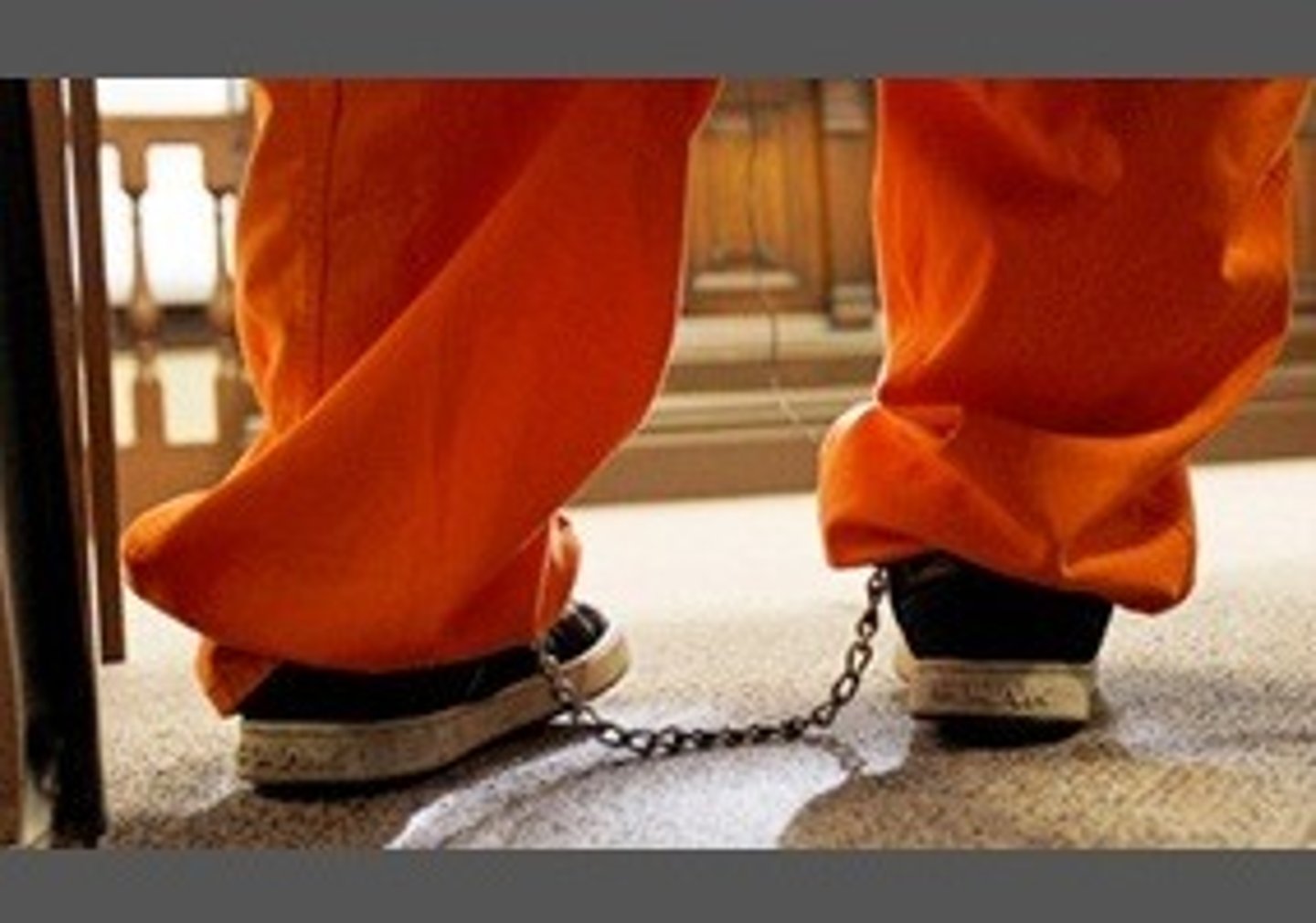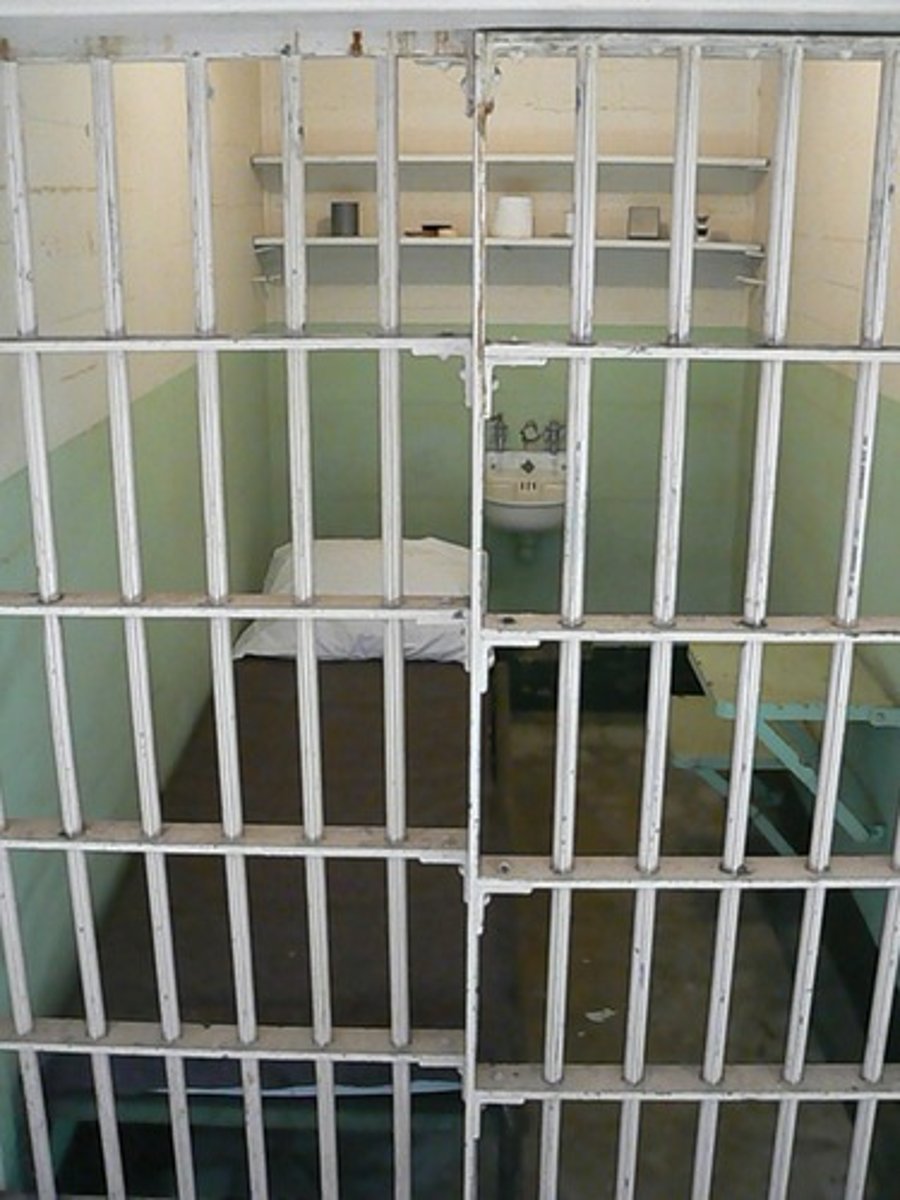Custodial Sentencing
1/13
There's no tags or description
Looks like no tags are added yet.
Name | Mastery | Learn | Test | Matching | Spaced |
|---|
No study sessions yet.
14 Terms
custodial sentencing
= A judicial sentence determined by a court where the offender is punished by serving time in a prison (incarceration) or in some other closed therapeutic and/or educational institution, such as a psychiatric hospital

Aims of custodial sentencing
1. Deterrence
2. Incapacitation
3. Retribution
4. Rehabilitation
Deterrence
... being in prison is generally accepted to be an unpleasant experience
=> this is to put people (or society as a whole) off offending in the first place
=> deterrence works on 2 levels:
- General Deterrence: broad message to society that crime will not be tolerated
- Individual Deterrence: to prevent an individual repeating the same crime again in light of their experience (conditioning through punishment)

Incapacitation
... the offender is taken out of society to prevent them reoffending and to protect the public
=> the need for incapacitation is likely to depend on the severity and the nature of the offence
e.g., the public need more protection from a murderer or a rapist than they do from an old lady who won't pay her taxes

Retribution
... society enacting revenge on the offender
=> this revenge comes in the form of suffering and should be proportionate to the seriousness of the crime
- offender should pay for their crime
- prison is normally society's way of making the offender suffer for what they have done
i.e., "an eye for an eye"

Rehabilitation
... some see prison as not being purely to punish, but also to reform the character of the offender
=> there is a belief that when an offender leaves prison, they should be better adjusted, and prepared to take a decent place in society
=> prison can, or should, provide opportunities to:
o develop skills or training
o access treatment for drug/alcohol addictions
o reflect on criminal behaviour

Psychological effects of custodial sentencing
Institutionalisation
Prisonisation
Stress and Depression
Recidivism
Institutionalisation
= whilst in a facility, offenders will adapt to the norms and routines of life behind bars
... the inmates may become so accustomed to these, that they are no longer able to function on the outside

Prisonisation
= refers to the way prisoners are socialised into adopting an "inmate code"
... behaviour that is accepted, rewarded, or punished on the inside, may be considered unacceptable on the outside
... it may be hard for prisoners to re-adapt these behaviour on release

Stress and Depression
- suicide rates are considerably higher in prisons then they are in general society
- self-mutilation and self-harm rates are also much higher
- the stress from the experiences inside prison, also increases the risk of psychological damage upon release
i.e., PTSD from constant fight or flight, sleep deprivation, etc.

Recidivism
= tendency to relapse into a previous condition or mode of behaviour
... in the context of crime, a convicted offender who has offended usually repeats
=> re-offending
i.e., 60% of prisoners will reoffend within 3 months of release

A03 WEAKNESS - individual differences + ineffective
P
A weakness of custodial sentencing is that it does not consider how many factors will affect an inmate's experience of prison.
EV
Not all prisoners react in the same way to incarceration. The size, the type, the way it is run, the kind of inmates, and the individual's own personality will all contribute to the inmate's overall experience in prison.
EX
Therefore, it is hard to make general conclusions about the effects and effectiveness of prison.
EXT
In addition to this, Raymond (2000) concluded that prisons do little to rehabilitate or deter offenders, and that despite this, government ministers often exaggerate the benefits of custodial sentencing to appear "tough on crime". This weakens the use of prisons and similar institutions as an effective way of dealing with offending behaviour.
LB
As a result of this, it is suggested that punishment should fit the individual, rather than the crime, in order to deal with the criminal's behaviour and prevent the chance of reoffending.
A03 WEAKNESS - sets them up for failure
P
Another weakness of custodial sentencing is the idea that imprisonment sets the offenders up for failure.
EV
Prisons are very regimented, and prisoners have to conform to strict rules and regulations. They are told when to sleep, wake, eat, exercise, etc., and have no autonomy.
EX
This can cause problems when prisoners have served long sentences and become very accustomed to the prison way of life, meaning they find it very hard to adapt to life upon their release, and this could lead to reoffending behaviour.
C
However, in order to combat the problems of institutionalisation and prisonisation, training is available to prisoners that allows them to upskill their lives so that they have a chance to survive on the outside, for example, by preparing them for employment.
LB
Although this is true, cuts to prison budgets mean that education, training, and therapy are not always available or effectively delivered, suggesting that opportunities for rehabilitation are limited.
A03 WEAKNESS - ethical issues
P
Some psychologists argue that custodial sentencing subjects the prisoners to severe psychological harm.
EV
The Prison Reform Trust (2014) found that 25% of women and 15% of men in prison reported signs of psychosis, suggesting that custodial sentencing causes stress and depression and may not be suitable for psychologically vulnerable individuals.
EX
This supports the argument that custodial sentencing causes stress and depression, suggesting that it may not be suitable for psychologically vulnerable individuals.
EXT
Furthermore, Bartol (1995) suggested that prison is "brutal, demeaning and generally devastating". Suicide rates are generally 15 times higher than in society, and young, single men within the first 24 hours of incarceration are most at risk.
LB
Consequently, the ethical implications of custodial sentencing may outweigh the benefits of incarceration to society and could be seen as an inhumane punishment.